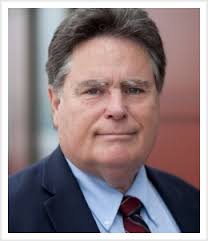Contact Mace News President
Tony Mace tony@macenews.com
to find a customer- and markets-oriented brand of news coverage with a level of individualized service unique to the industry. A market participant told us he believes he has his own White House correspondent as Mace News provides breaking news and/or audio feeds, stories, savvy analysis, photos and headlines delivered how you want them. And more. And this is important because you won’t get it anywhere else. That’s MICRONEWS. We know how important to you are the short advisories on what’s coming up, whether briefings, statements, unexpected changes in schedules and calendars and anything else that piques our interest.
No matter the area being covered, the reporter is always only a telephone call or message away. We check with you frequently to see how we can improve. Have a question, need to be briefed via video or audio-only on a topic’s state of play, keep us on speed dial. See the list of interest areas we cover elsewhere
on this site.
—
You can have two weeks reduced price no-obligation trial for $199. No self-renewing contracts. Suspend, renew coverage at any time. Stay with a topic like trade while it’s hot and suspend coverage or switch coverage areas when it’s not. We serve customers one by one, 24/7.
—
Tony Mace was the top editorial executive for Market News
International for two decades.
Washington Bureau Chief Denny Gulino had the same title at Market News for 18 years.
Similar experience undergirds our service in Ottawa, London, Brussels and in Asia.

President
Mace News

D.C. Bureau Chief
Mace News

Federal Reserve
Mace News

Reporter and expert on the currency market.
Mace News

Reporter and expert on derivatives and fixed income markets.
Mace News

Financial Journalist
Mace News

Reporter, economic and political news.
Japan and Canada
Mace News
WASHINGTON (MaceNews) – Amid much pessimism about severe economic domestic consequences, President Trump Wednesday imposed massive tariffs on several dozen countries including China and the European Union and a blanket 10% levy on all the rest.
The Rose Garden announcement shook stock futures into large negatives while interest rates maintained lows last hit in October. The U.S. 10-year yield was at 4.13%.
One CNBC commentator said the new tariffs were the “worst of the worst case scenarios,” with an additional 34% levy on China goods on top of the already imposed 20%. The EU nations get 20%, Japan 24%. The already-announced 25% tariff on all imported cars and parts goes into effect at midnight while the latest so-called reciprocal tariffs hit April 5 and April 9.
A minimum 10% baseline reciprocal tariff will be imposed on all imports from anywhere if not covered by the higher tariff rates announced Wednesday such as is the case for the UK and Scotland. Otherwise, in what President Trump said was a “kind” gesture, the reciprocal tariffs are being set at only half the rates that would truly be symmetrically recriprocal.
For Canada and Mexico, no change, as explained in a White House fact sheet: This means USMCA compliant goods will continue to see a 0% tariff, non-USMCA compliant goods will see a 25% tariff, and non-USMCA compliant energy and potash will see a 10% tariff. In the event the existing fentanyl/migration IEEPA orders are terminated, USMCA compliant goods would continue to receive preferential treatment, while non-USMCA compliant goods would be subject to a 12% reciprocal tariff.
Exempt from any of the reciprocal tariffs are those categories to be subject to “sectoral” tariffs, such as copper, pharmaceuticals, semiconductors, lumber, energy and “other certain minerals that are not available in the United States.”
Any retaliation answering the day’s reciprocal tariffs will be answered with increased USA tariffs. But if other countries take significant steps to lower their tariffs then the USA tariffs can be decreased.
Other than China, Japan and EU tariffs, those countries described as “worst offenders” get hit with levy rates up to 50%. For example, India gets a 26% rate, Vietnam faces a 50% tariff rate, Cambodia 49 %.
The jarring realignment of global trade arrangements – the most severe in many, many decades – is on a tight schedule that will force customs agents, importers, suppliers and logistics specialists to scramble in figuring out what to do next. President Trump, who has yet to concede that American importing firms, not foreign governments actually pay the tariffs, spoke mostly in sweeping generalities about how the United States has suffered from trade abuse despite the negotiated and otherwise long-accepted trade arrangements built through the decades.
“We’re going to be an entirely different country,” Trump said. “It’s going to be fantastic for the workers.” Trump’s sweeping vision for the future means, he said, “There will never have been a transformation that’s already happening in the United States of America.. It’s an incredible thing to watch.”
But critics say that even if disruptive new tariffs eventually pull in new jobs for Americans, that transformation will take years to accomplish while meanwhile prices of an overwhelmingly large portion of purchased goods will go up. For all automobiles, those entirely manufactured across the border or those produced domestically but with tariffed engines, transmissions and many other components, the increased costs could be several thousand dollars per vehicle.
For President Trump, the changes have made him the center of attention around much of the world. As the tariffs prompt bilateral negotiations in the months ahead, the focus will remain on the White House while the next shoes – retaliatory tariffs, drop. Now come the price adjustments for hundreds of categories of foods and manufactured products as well as the supply constraints that will erupt for many popular imports, from alcoholic beverages to shoes, the “de-tox” period as described by Treasury Secretary Scott Bessent who says the storied American Dream no longer means cheap items from countries like China and Bangladesh.
–ISM Manufacturing Index at 49.0 Vs. 50.3 in February, Below Consensus (49.6)
–ISM’s Fiore: Activity ‘Overshadowed’ by US Import Tariffs; So Many Unknowns, More Confusion
–Fiore: Still Think Lower New Orders, Higher Inventories, Slower Supply Deliveries Will Clear Up
–Fiore: Tariffs Could Prompt Workers Hit by Higher Costs of Living to Demand Wage Hikes, Triggering Wage-Price Cycle
By Max Sato
(MaceNews) – U.S. manufacturing activity slipped back into contraction in March after two months of growth as many firms, confused and uncertain over the Trump administration’s protectionist trade policy, trimmed production and workers in response to lower demand and surging costs.
The latest monthly data released Tuesday by the Institute for Supply Management also showed that about two-thirds of the surveyed firms were focused on the impact of existing and upcoming import tariffs and retaliatory measures by major U.S. trading partners ahead of the administration’s “reciprocal tariffs” expected to be unveiled Wednesday.
The ISM sector index fell 1.3 percentage points to 49.0 in March, below the median economist forecast of 49.6, after slipping 0.6 point to 50.3 in February and rising 1.7 points to 50.9 in January, the first time the index had popped above the make-or-break line of 50.
“Demand and production retreated and destaffing continued, as panelists’ companies responded to demand confusion,” Timothy Fiore, chair of the ISM Manufacturing Business Survey Committee, said in a statement. “Prices growth accelerated due to tariffs, causing new order placement backlogs, supplier delivery slowdowns and manufacturing inventory growth.”
Fiore told reporters that as many as 68% of the respondents’ comments were about the tariffs in the March survey, overshadowing supply chain management activity.
Fiore was asked whether he would stick to his comments made last month that the combination of lower new orders, higher inventories and slower supply deliveries was a “one-month blip and thus should “clear up” in March or April.
“I think they will clear up,” he replied. “The imposition of tariffs is going to have a one-time hit.” But he also noted that more tariffs were expected to come and that the impact seen in the March report was primarily from the tariffs on steel and aluminum imports as well as those on Chinese-made products that had already been imposed. “If we are only dealing with those tariffs, this thing will resolve itself probably by the time we get to May.”
President Trump is expected to impose “reciprocal tariffs” on trading partners on Wednesday, targeting countries and regions that have a trade surplus with the United States. The action is aimed at reducing the trade deficit but it will also push up import costs that would hurt U.S. households and businesses.
Trump has already slapped 25% tariffs on Canadian and Mexican imports to the U.S. and an additional 10% on China over illegal immigration and drug trafficking for which he blames those countries. He has also imposed a 25% tariff on all imported autos and auto parts.
On the question of whether U.S. manufacturers would benefit from the import tariffs and a shift of overseas factories back to domestic locations as administration officials have claimed, Fiore said, “I do not see tariffs as being a way to reassure U.S. manufacturing and maintain the same cost structure that we have today,” he said, pointing that U.S. firms import various goods produced offshore because it is less expensive to do so.
Fiore warned that tariffs may raise the cost of living, which in turn could prompt workers to demand wage hikes to match the price increases, triggering an upward wage-price cycle. “We are still in that one-time event and that is still clipping our demand and we still have the input side to accelerate,” he said.
Among the five subindexes that directly factor into the manufacturing PMI, three were in negative territory: the new orders index at 45.2 (-3.4 points), production 48.3 (-2.4) and employment 44.7 (-2.9). Two were above the key 50 line: supplier deliveries 53.5 (-1.0) and manufacturer inventories 53.4 (+3.5).
The new orders index contracted in March for the second consecutive month after three consecutive months of expansion. It stood at 45.2, down 3.4 points from 48.6 in February and hitting the lowest since May 2023 (43.4).
The index hasn’t indicated consistent growth since a 24-month streak of expansion that ended in May 2022.
The production index fell 2.4 points to 48.3, slipping into contraction territory after two consecutive months of expansion. Previously, the index had been in contraction territory for eight consecutive months. Prior to the first two months of 2025, the last time the index registered above 50 was in April 2024 (50.7).
The employment index stood at 44.7, falling 2.9 points from 47.6 the previous month, posting its second straight month of contraction after expanding in January, with seven straight months of contraction before that. Since May 2022, th index has contracted in 28 of 35 months. “Freezing and attrition were the primary tools used for the second straight month, in lieu of the more dramatic and costly layoff process,” Fiore said.
Delivery performance of suppliers to manufacturing organizations was slower in March. The supplier deliveries index (the only one that is inversed) stood at 53.5, down a full point from 54.5 in February, indicating slower delivery performance for the fourth straight month and the eighth in the past 12 months.
The manufacturing inventories index indicated the first growth in seven months, rising 3.5 points to 53.4 in March from 49.9 in February. The index has gained 7.5 points the last two months to reach its highest level since October 2022, when it was also at 53.4. Companies continued to pull forward (advance) deliveries of materials in an attempt to minimize the financial impacts of potential tariffs, Fiore said.
Among other subindexes, the prices paid index continued surging in March, up 7.0 points at 69.4 after soaring 7.5 points to 62.4 in February. It remains the highest since 78.5 recorded in June 2022, when price pressures were easing month by month.
By Max Sato
(MaceNews) – The Bank of Japan’s quarterly Tankan business survey is forecast to show confidence among manufacturers slipped in the March quarter in the face of stiff tariffs on U.S. imports of metals and vehicles as well as President Trump’s plans to slap “reciprocal tariffs” on imports from global trading partners.
China’s struggling recovery from its property market problems is also seen putting a damper on corporate sentiment overall. Sentiment among non-manufacturers appears to have edged up or being flat. The tourism industry is benefiting from an influx of foreign visitors amid the weak yen while rising costs of living are hurting consumer spending.
The Tankan diffusion index showing sentiment among major manufacturers is forecast at 12, down from 14 in December. The index measuring sentiment among major non-manufacturers is seen at 34, easing from 33 in the previous poll.
The index for smaller manufacturers is forecast to dip to -1 from +1 while that for their non-manufacturers is seen unchanged at 16.
The BOJ will release the results of its Tankan business survey conducted from late February through late March at 0850 JST on Tuesday, April 1 (1950 EDT/2350 GMT Sunday, March 31).
Major firms are expected to project their plans for business investment in equipment would rise a combined 9.1% on the year in fiscal 2024 ending in March 2025, down from +11.3% in the December survey and indicating firms are becoming more cautious in the face of a global trade war. Capex plans are generally supported by demand for automation amid labor shortages as well as government-led digital transformation and emission control.
Smaller firms are expected to maintain their combined capital spending plans at a 4.7% increase after lifting it to +4.0% in December from +2.6% in September. Those firms tend to have conservative plans at the start of each fiscal year and revise them up later.
Looking ahead, major firms are forecast by economists to present a combined 2.6% rise in capex for fiscal 2025 ending in March 2026 (their first estimate) while smaller firms are expected to start their plans for the incoming fiscal year with a 3.9% drop.
BOJ policymakers will analyze this and other pieces of data ahead of their next policy meeting on April 30-May 1, when the board will update their medium-term growth and inflation forecasts.
At its latest meeting on March 18-19, the BOJ’s nine-member board voted unanimously to maintain the target for overnight interest rate at 0.5%, as widely expected, after voting 8 to 1 to raise the policy rate by another 25 basis points to 0.5% in January in a third rate hike during the current normalization process that began in March 2024.
The next rate hike is expected to be in July or September, depending on economic data and the impact of geopolitical risks. Members are closely monitoring whether expected high wage increases by major firms will spread to smaller firms in fiscal 2025 starting on April 1 at a time when real wages are falling, which could hurt consumption further and generate deflationary pressures.
The board continues to expect inflation to be anchored around its 2% target by early 2026, saying, “In the second half of the projection period (from fiscal 2024 through fiscal 2026 ending March 2027), underlying CPI inflation is likely to be at a level that is generally consistent with the price stability target.”
Governor Kazuo Ueda told a post-meeting news conference on March 19 that he would “keep in mind” heightened upside risks to inflation warned about by some BOJ board members at the latest two-day meeting among other things when he formulates monetary policy.
“I think the uncertainties over global growth are increasing but if you take a look at the domestic wage negotiations, the positive cycle is growing,” Ueda said, noting that wage hikes proposed by large firms are a little higher than expected.
But the governor also said the BOJ would not raise its policy rate just to contain a spike in the prices of rice in the aftermath of acute domestic supply shortages because “that would cool off consumption.”
Ueda warned that the underlying inflation is estimated to be still under the bank’s 2% price stability target. “To put it simply, the price increase in service prices is not so strong,” he said, underscoring the slow progress in lifting regulated wages as well as underpaid workers at restaurants and tourism.
The BOJ is believed to be on course for two more 25 basis point rate hikes that would take the overnight interest rate target to 1% by late 2025 or early 2026 as part of its gradual normalization process after more than a decade of large-scale easing.
The BOJ under Governor Ueda, who took office in April 2023, shifted gear in March 2024 with its first rate hike in 17 years and an end to the seven-year-old yield curve control framework, following a decade of large monetary easing aimed at reflating the economy. The board stood pat in December, October and September after voting 7 to 2 in July to hike the rate to 0.25% from a range of 0% to 0.1%.
–ISM Manufacturing Index at 49.0 Vs. 50.3 in February, Below Consensus (49.6)–ISM’s Fiore: Activity ‘Overshadowed’ by US Import Tariffs; So Many Unknowns, More Confusion–Fiore: Still
By Max Sato (MaceNews) – The Bank of Japan’s quarterly Tankan business survey is forecast to show confidence among manufacturers slipped in the March quarter
– May Have To Leave Rates Unchanged Longer Or Hike Rates If Inflation Worsens By Steven K. Beckner (MaceNews) – Although downside risks to the
– Powell: ‘Not in Any Hurry to Move,’ ‘Well Positioned to Wait For Clarity’ – SEP Retains December Dots While Forecasting More Inflation, Less GDP
WASHINGTON (MaceNews): The Federal Ope Market Committee Wednesday provided no surprises in its latest policy statement and the dot plot of participants still saw two
By Max Sato (MaceNews) – Japan’s government maintained its cautiously optimistic assessment for the seventh straight month, saying the economy is expected to stay on

–US Equity Allocation Sees Biggest Monthly Drop on Record By Vicki Schmelzer NEW YORK (MaceNews) – A drop in expectations that the U.S. economy will
By Max Sato (MaceNews) – Canada’s new Prime Minister Mark Carney, who was sworn in Friday, vowed to protect his country from the threat of
Contact Mace News President
Tony Mace tony@macenews.com
to find a customer- and markets-oriented brand of news coverage with a level of individualized service unique to the industry. A market participant told us he believes he has his own White House correspondent as Mace News provides breaking news and/or audio feeds, stories, savvy analysis, photos and headlines delivered how you want them. And more. And this is important because you won’t get it anywhere else. That’s MICRONEWS. We know how important to you are the short advisories on what’s coming up, whether briefings, statements, unexpected changes in schedules and calendars and anything else that piques our interest.
No matter the area being covered, the reporter is always only a telephone call or message away. We check with you frequently to see how we can improve. Have a question, need to be briefed via video or audio-only on a topic’s state of play, keep us on speed dial. See the list of interest areas we cover elsewhere
on this site.
—
You can have two weeks reduced price no-obligation trial for $199. No self-renewing contracts. Suspend, renew coverage at any time. Stay with a topic like trade while its hot and suspend coverage or switch coverage areas when it’s not. We serve customers one by one 24/7.
—
Tony Mace was the top editorial executive for Market News International for two decades.
Washington Bureau Chief Denny Gulino had the same title at Market News for 18 years.
Similar experience undergirds our service in Ottawa, London, Brussels and in Asia.